Search Results
Fine Jewelry University Articles matching: “Three crowns 14 E”
Showing only FJU Article results. Click here to show all results.
Fine Jewelry University (Show All FJU Articles)
-
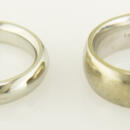
The Difference Between White Gold and Platinum
…mixed with gold is called its karat. The key to understanding gold karat is the karat value over 24. An example is a 14-karat gold wedding ring. It is 14/24, which equals 58.3% gold and 41.7% alloy. The white color is achieved by a …alloying is also a hardening process for both metals. The hardeners used in platinum is either 10% or 5% of the mix. 14 karat white gold has 42% and 18 karat has 25% alloy used to whiten and harden. The more alloy makes white gold a …
-
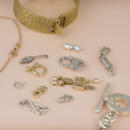
Types of Jewelry Clasps
In the world of jewelry, there are a wide variety of clasps, each with its own purpose and unique design. Whether you are … for a replacement for a broken clasp or just looking to learn more about them, this article is for you. History of Jewelry Clasps Jewelry clasps are a small but important component of many types of jewelry like necklaces, bracelets, … anklets. Clasps allow for easy attachment and removal of the jewelry and provide a secure way to wear and display precious pieces. The history of jewelry clasps dates back centuries, and we can watch as clasps have evolved over time …
-
Caring for and Cleaning Your Jewelry
… hardness scale. Diamond is the hardest at 10. Talc is listed as 1 the softest. Pure gold (24 karat) is Mohs 2.5, 14 and 18 karat list at Mohs 3. Platinum list at Mohs 4.33. Sterling silver list at Mohs 2.5. This shows why jewelry …How to Clean Jewelry A diamond’s spectacular beauty is due to its light show. Diamonds make light reflect, show its many colors…. To perform its magic the diamond must be clean. Diamonds are grease magnets. They will pull the oil from your fingers. Soaps and lotions add a coating that stops the light show. Dust and dirt stick to the grease and oils creating a …
-
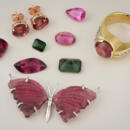
Gem in the Spotlight: Tourmaline
Tourmaline is one of the most beautiful gems that you’ve probably never heard of. Less popular than the likes of ruby or … flies under the radar in the gem world and remains the best kept secret of gem collectors and connoisseurs who appreciate its unique properties and stunning array of colors. In fact, tourmaline is found in almost any color you can … most likely used and appreciated it for hundreds of years. But, before the advent of modern gemology, most tourmaline was believed to be ruby, sapphire, or emerald. Gemology of Tourmaline Gemologically speaking, tourmaline is its own …
-
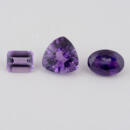
Gem in the Spotlight: Amethyst
Amethyst is known for its beautiful purple color, and it is the most important quartz variety used in jewelry. Purple …been considered a royal color, so it is not surprising that amethyst has been in so much demand throughout history. Gemology Amethyst is a variety of quartz that is colored by the presence iron and aluminum. The violet color of …in shades of pale to medium purple. Amethyst is typically found in Brazil, Uruguay, and Madagascar, but it can also be found in smaller deposits in other countries such as Russia, the United States, and Canada. Amethyst is known for …
-
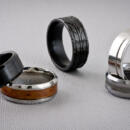
Alternative Metals for Men’s Jewelry
…platinum are all excellent metals which make great wedding bands, but with the advent of new technologies the “big three” have been joined by a slew of new options. Options are great, but with so many to choose from, it can be difficult to… which one is best for you. This article breaks down many of the new “alternative metals” (and non-metals) and explains why you may want to choose one for your wedding band. Titanium Titanium is an excellent metal for wedding bands. It…
-
Learn Secret Diamond Buying Skills From a Professional Diamond Buyer
…, and Princess all describe the shape of the gem. Round diamonds are by far the most popular cut in diamonds under three carat. The diamond’s shape should be one of the earliest decisions you make. It will determine the style of ring and … diamond loses its brilliance. So how can a diamond buyer learn cut to judge the quality with confidence? There are three ways. First, learn all the angles and percentages of each facet and exactly measure each stone to do an analysis of …
-
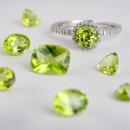
Gem in the Spotlight: Peridot
Peridot is a lovely yellow-green gem with a rich history. Legend has it that Peridot was the favorite gemstone of …. The ancients called it the “gem of the sun”. It was believed that peridot could chase away evil spirits and dissolve curses but only when set in gold. Peridot is the birthstone for August. It is also the accepted anniversary gemstone… 16th year of marriage. Peridot’s unique yellow-green color is very attractive. The name “Peridot” is simply a French word derived from the Arabic for green. Peridot’s color ranges from yellow-green to a warm olive green, and it is …
-

How to Sell Your Jewelry
…. Platinum most of the time is 90% pure and 10% alloy. Silver jewelry is usually sterling, which is .925 pure. The three units of weight used with precious metals are troy ounces, pennyweights, and grams. The troy ounce is equal to 20 … look the ease of transaction. Not all people decide to buy and pay cash on the spot. Some individuals take two or three visits just to make up their mind to buy. There could also be a measure of trust in shipping the jewelry across the …